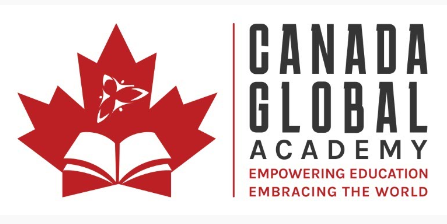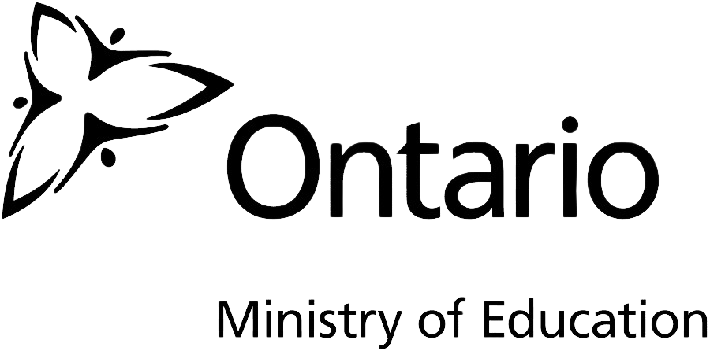Is the traditional education system keeping up with the ever-evolving technological landscape? As the world becomes increasingly digital, the need for innovative educational solutions is more pressing than ever. Can EdTech tools pave the way for a new era of learning that is better suited to the needs of the 21st-century student?
From educational expertise to instructional design, schools are constantly seeking ways to enhance their educational strategies and provide students with the best possible learning experience. Enter Canada Global Academy’s School Partnership Program.
Join us as we explore how Canada Global Academy’s School Partnership Program is revolutionizing schools and paving the way for a new era of education. From cutting-edge digital learning platforms to a holistic approach that focuses on skill development, discover how the program is shaping the future of education.
Key Takeaways:
- EdTech tools have the potential to revolutionize the education system
- Canada Global Academy’s School Partnership Program offers innovative solutions for schools
- The program focuses on holistic education and skill development
- Exploring the impact of EdTech on the future of education
- The importance of adapting to the digital era and embracing technological advancements
Global Citizens in Action: 4 Creative Projects Fostering Intercultural Understanding
In today’s interconnected world, fostering intercultural understanding and promoting global citizenship is crucial for creating a more inclusive and harmonious society. Through cultural exchange, diversity appreciation, and cross-cultural communication, we can develop a global awareness that transcends borders and unites people from all walks of life.
In this section, we will explore four creative projects that are actively working to achieve these goals. These projects provide students with unique opportunities to learn about different cultures, develop empathy and understanding, and become active global citizens. By participating in these initiatives, students can broaden their horizons, challenge stereotypes, and cultivate meaningful connections with individuals from diverse backgrounds.
Project 1: [Project Name]
Project 1 is a groundbreaking initiative that focuses on intercultural understanding through immersive experiences. Students engage in cultural exchange programs, where they have the opportunity to live with host families in foreign countries. This firsthand experience allows them to fully immerse themselves in a different culture, learn a new language, and gain a deeper appreciation for diversity.
Through carefully curated activities and workshops, Project 1 emphasizes cross-cultural communication and the exploration of global issues. Students actively participate in community projects, collaborate with local organizations, and contribute to sustainable development initiatives. By doing so, they not only deepen their understanding of different cultures but also develop the skills and knowledge needed to address real-world challenges.
This project has made a significant impact on the participating students by broadening their perspectives and fostering a sense of global awareness. They return to their own communities as advocates for intercultural understanding, equipped with the ability to navigate diverse environments and communicate effectively across cultural boundaries.
Join Project 1 and be part of a community committed to fostering intercultural understanding, global citizenship, and cross-cultural collaboration. Together, we can build a more inclusive and interconnected world. Visit [Project website] for more information.
| Goal | Methods | Impact |
|---|---|---|
| Promote intercultural understanding | Immersive cultural exchange programs | Deepened appreciation for diversity |
| Enhance cross-cultural communication | Community projects and workshops | Improved ability to navigate diverse environments |
| Develop global awareness | Engagement in global issues | Equipped to address real-world challenges |
Tech Savvy Students: Will EdTech Tools Revolutionize International Education?

In today’s digital age, education is no longer confined to traditional classrooms and physical borders. The advent of EdTech tools has opened up countless possibilities for global learning, cross-border education, and the transformation of international education as we know it. These innovative technologies are paving the way for a new era of education, where students can access high-quality learning resources from anywhere in the world.
EdTech tools facilitate digital learning experiences that transcend geographical limitations, providing students with the opportunity to connect with peers and educators from different cultures and backgrounds. Through online education and virtual classrooms, students can immerse themselves in a truly global learning environment, broadening their horizons and gaining a deeper understanding of diverse perspectives.
The role of EdTech in international education cannot be understated. It has the potential to bridge the gap between students and teachers, making education accessible to anyone with an internet connection. With digital learning platforms and virtual classrooms, students can engage in interactive lessons, collaborate with classmates, and receive personalized instruction regardless of their location. This democratization of education allows for greater inclusivity and equal opportunities for all learners.
Moreover, EdTech tools enable cross-border education, breaking down the barriers that once hindered international collaboration. Through online platforms, students can participate in joint projects, cultural exchanges, and global learning communities. They can develop essential skills for the globalized world, such as communication, collaboration, and digital literacy, while fostering a sense of global citizenship.
However, as with any technological advancement, there are challenges to consider. The integration of EdTech tools requires careful planning, training, and support for educators and students. It is essential to ensure that digital learning is accessible to all, regardless of socioeconomic status or technological limitations. Additionally, the ethical and privacy implications of virtual classrooms and online education need to be addressed to create a safe and secure learning environment.
Overall, EdTech tools have the potential to revolutionize international education by providing access, fostering global learning communities, and creating virtual classrooms that transcend physical boundaries. The future of education is undoubtedly digital, and as tech-savvy students embrace these tools, they will become the global citizens and leaders of tomorrow.
Explore how Canada Global Academy’s School Partnership Program is revolutionizing schools. Visit https://canadaglobalacademy.com/school-partnership-program/ to learn more.
Beyond the Test: 3 Innovative Assessment Methods for Diverse Learners
Assessing student learning is a critical aspect of education, but traditional tests and exams may not capture the full range of abilities and skills that diverse learners possess. To address this challenge, educators are embracing innovative assessment methods that provide a more comprehensive understanding of students’ capabilities. In this section, we will explore three assessment methods that go beyond the traditional approach, catering to the needs of diverse learners and promoting a holistic evaluation of their abilities.
Assessment Method 1: Performance-Based Assessments
Performance-based assessments are designed to evaluate students’ abilities to apply their knowledge and skills in real-world contexts. Rather than relying solely on written tests, these assessments require students to demonstrate their understanding through practical tasks or projects. By engaging in hands-on activities, students can showcase their problem-solving abilities, critical thinking skills, and creativity. Performance-based assessments not only provide a more authentic evaluation of students’ abilities but also promote active learning and deeper understanding of the subject matter.
For example, in a science class, instead of taking a traditional written exam, students may be required to design and conduct a scientific experiment to demonstrate their understanding of the scientific method. This approach allows students to apply theoretical knowledge to a practical situation, enabling teachers to assess their ability to formulate hypotheses, collect data, and draw conclusions.
Assessment Method 2: Authentic Assessments
Authentic assessments are designed to mimic real-world situations and tasks that students are likely to encounter outside the classroom. These assessments focus on evaluating students’ ability to transfer their knowledge and skills to practical, relevant scenarios. By aligning assessments with real-world contexts, educators can assess students’ problem-solving skills, critical thinking abilities, and decision-making processes.
For example, in a social studies class, instead of a traditional multiple-choice test, students may be asked to analyze primary sources, such as historical documents or artifacts, and present their findings in a persuasive essay or a multimedia presentation. This approach not only evaluates students’ understanding of historical concepts but also assesses their research and analytical skills, as well as their ability to communicate effectively.
Assessment Method 3: Formative Assessments
Formative assessments are ongoing assessments that provide feedback to students and teachers throughout the learning process. Unlike summative assessments, which are typically administered at the end of a unit or course, formative assessments offer opportunities for students to reflect on their progress, identify areas for improvement, and receive timely feedback from teachers.
Formative assessments can take various forms, such as quizzes, short written reflections, group discussions, or one-on-one conferences with students. By integrating formative assessments into classroom instruction, educators can track individual student progress, identify areas of strength and weakness, and adjust their teaching strategies accordingly. These assessments promote student engagement, self-regulation, and metacognitive skills, allowing educators to provide targeted support and intervention when needed.
Employing these innovative assessment methods ensures that the diverse strengths and abilities of all learners are recognized and valued. By going beyond traditional tests and exams, educators can gain deeper insights into students’ capabilities while empowering learners to apply their knowledge and skills in authentic, real-world contexts.
World-Class Curriculum Unlocked: Balancing Standards with Individual Needs
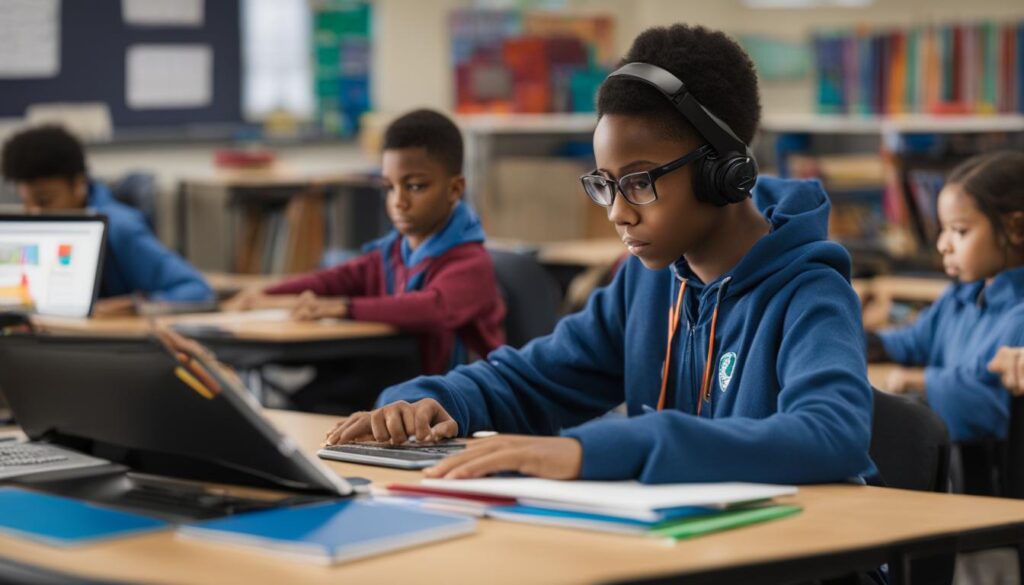
In the realm of education, curriculum development plays a pivotal role in shaping the learning experience of students. However, a one-size-fits-all approach often fails to address the unique needs and interests of individual learners. In order to bridge this gap, personalized learning has emerged as a powerful solution that allows for a customized curriculum tailored to the specific requirements of each student.
Personalized learning shifts the focus from a standards-based education model to a learner-centered approach. By taking into account students’ interests, learning styles, and aspirations, educators can create a curriculum that resonates with the diverse needs of their learners. This individualized education not only enhances engagement but also fosters a deeper understanding and retention of knowledge.
Creating a Customized Curriculum
Implementing a customized curriculum involves a thoughtful and strategic approach. Here are some key considerations:
- Assessing student needs: Conducting regular assessments to understand the strengths, weaknesses, and learning styles of each student.
- Flexibility in content delivery: Offering a variety of resources and materials to accommodate different learning preferences and pace.
- Personalized assignments: Assigning tasks and projects that align with students’ interests and allow them to demonstrate their learning in unique ways.
- Data-driven decision-making: Utilizing student data and feedback to continually refine and adapt the curriculum to meet individual needs.
By incorporating these strategies, educators can create a curriculum that empowers students to take ownership of their learning journey and thrive academically.
Explore how Canada Global Academy’s School Partnership Program is revolutionizing schools. Visit https://canadaglobalacademy.com/school-partnership-program/ to learn more.
Building Bridges, Not Walls: Can Your School Be a Global Citizenship Incubator?

Promoting Global Citizenship in Schools
In today’s increasingly interconnected world, fostering global citizenship and promoting global awareness are essential components of education. Schools play a crucial role in shaping young minds to become responsible global citizens who are aware of global issues, embrace cultural diversity, and take up social responsibilities.
By implementing various strategies and initiatives, schools can create an environment that encourages global citizenship and cultural exchange. Students can develop a deep understanding of global issues and cultivate empathy towards different cultures, leading to a more inclusive and harmonious society.
One effective strategy is to establish partnerships with international schools or organizations, allowing students to engage in cultural exchange programs. These programs enable students to interact with peers from diverse backgrounds, fostering understanding and appreciation of different cultures.
Furthermore, integrating global issues into the curriculum can help students develop a sense of social responsibility. By discussing topics such as climate change, poverty, or human rights, students can become aware of the challenges facing the world and be encouraged to take action in their own communities.
“Education is the most powerful weapon we can use to change the world.”
Encouraging participation in global initiatives and community service projects can also instill a sense of social responsibility in students. By engaging in activities that address global issues, students can actively contribute to positive change and develop a sense of agency.
| Strategies for Promoting Global Citizenship | Benefits |
|---|---|
| Establishing international partnerships | Enhanced cultural understanding and appreciation |
| Integrating global issues into the curriculum | Awareness of global challenges and fostering empathy |
| Encouraging participation in global initiatives | Development of social responsibility and agency |
By building bridges that connect cultures and breaking down walls that divide us, schools can empower students to become active participants in the global community. Through global citizenship education, students can develop the skills and mindset necessary to address complex global challenges and navigate an increasingly interconnected world.
Explore how Canada Global Academy’s School Partnership Program is revolutionizing schools. Visit https://canadaglobalacademy.com/school-partnership-program/ to learn more.
Future-Proofing Graduates: What Skills Will Make Them Thrive in the Globalized World?
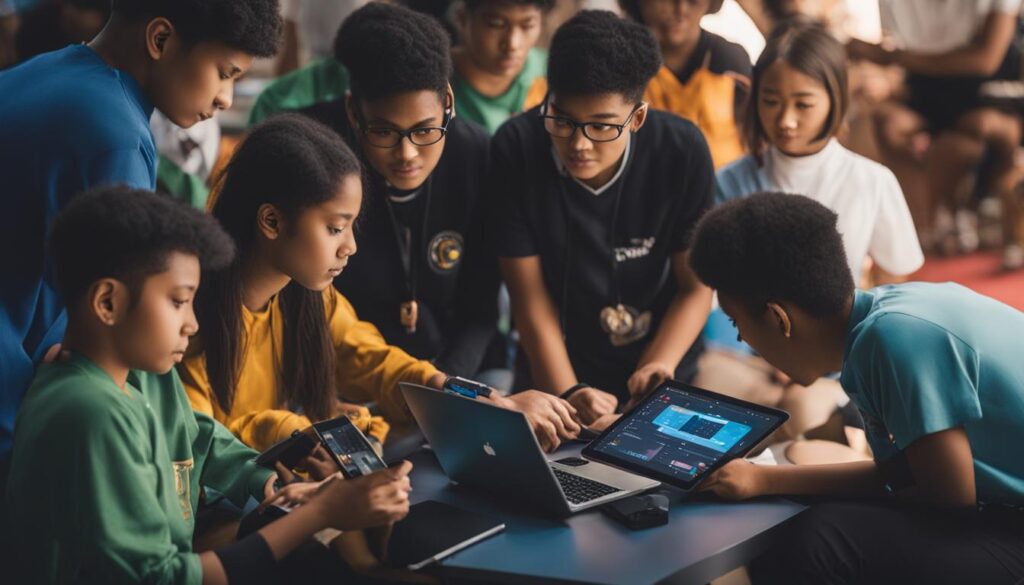
Essential Skills for the Globalized World
In today’s rapidly evolving global landscape, graduates need a diverse set of skills to navigate the challenges and opportunities that lie ahead. The concept of future skills and 21st-century skills has gained prominence, emphasizing the importance of equipping students with the necessary competencies to succeed in a globalized workforce. Among these essential skills are critical thinking, communication, collaboration, adaptability, and digital literacy.
Critical Thinking: In a world filled with complex problems and diverse perspectives, critical thinking is crucial. It enables individuals to analyze information, question assumptions, and make well-informed decisions. By developing this skill, graduates can effectively evaluate situations, solve problems, and adapt to changing circumstances.
Communication Skills: The ability to communicate clearly and effectively across cultures and contexts is essential in a globalized world. Strong communication skills enable graduates to express their ideas, collaborate with others, and build meaningful connections. Effective communication fosters understanding, bridges cultural divides, and facilitates productive collaboration.
Collaboration: Collaboration is a fundamental skill required to thrive in a globalized society. It involves working effectively with diverse teams, respecting multiple perspectives, and leveraging collective intelligence to achieve common goals. Graduates who excel in collaboration can navigate diverse cultural contexts, bring people together, and drive meaningful change through teamwork.
Adaptability: The ability to adapt and embrace change is critical in a rapidly changing world. Graduates must be able to navigate uncertain environments, embrace new technologies, and learn continuously. Adaptability allows individuals to thrive in dynamic situations, remain resilient in the face of challenges, and seize opportunities for growth and innovation.
Digital Literacy: In an increasingly digital world, digital literacy has become an essential skill. Graduates need to be proficient in using technology, navigating digital platforms, and critically evaluating online information. Digital literacy empowers individuals to leverage technology for learning, communication, and problem-solving, enabling them to thrive in a digitally interconnected global society.
Overall, developing these essential skills is crucial for future-proofing graduates and ensuring their success in the globalized world. By prioritizing critical thinking, communication skills, collaboration, adaptability, and digital literacy in education, we can equip students with the tools they need to navigate global challenges, contribute meaningfully, and thrive in the interconnected world of tomorrow.
| Essential Skills | Description |
|---|---|
| Critical Thinking | Analyzing information, questioning assumptions, and making well-informed decisions |
| Communication Skills | Expressing ideas, collaborating with others, and building meaningful connections |
| Collaboration | Working effectively with diverse teams, respecting multiple perspectives, and achieving common goals |
| Adaptability | Navigating uncertainty, embracing change, and seizing opportunities for growth |
| Digital Literacy | Proficiency in using technology, navigating digital platforms, and critically evaluating online information |
Unlocking Creativity: Can Arts & Language Integration Boost Global Communication?

The role of arts and language in global communication is crucial in fostering cultural expression, creative communication, and global understanding. By integrating arts education and language learning, educators can create a rich and immersive learning experience that enhances students’ ability to communicate effectively in a global context.
The Role of Arts and Language in Global Communication
Arts integration, where arts activities are incorporated into various academic subjects, allows students to express themselves creatively and explore different cultures. By engaging in visual arts, music, dance, and theater, students can develop a deep appreciation for cultural diversity and learn to communicate their ideas and emotions through artistic expression.
Language learning is also a key component of global communication. By immersing students in the study of different languages, they not only acquire linguistic skills but also gain a deeper understanding of diverse cultures and perspectives. Language immersion programs provide students with real-world experiences that facilitate cross-cultural communication and foster global citizenship.
The benefits of integrating arts and language in education extend beyond the acquisition of skills. It enhances critical thinking, problem-solving, and collaboration – essential competencies for the globalized workforce. Through arts and language integration, students develop the ability to express themselves creatively, think critically, and communicate effectively, preparing them to navigate the complexities of a globalized world.
Incorporating arts education and language learning into curricula can be done through various strategies. Schools can implement interdisciplinary projects that combine arts and language in meaningful ways, such as presenting a play in a foreign language or creating visual art inspired by literature. Collaborative projects that involve students from different countries or cultures can also foster global communication and understanding.
By unlocking creativity through arts and language integration, educators can empower students to become effective communicators, global citizens, and cultural ambassadors. By embracing the power of the arts and language, we can create a world where communication knows no boundaries.
Personalized Learning Revolution: Tailoring Education to Every Student’s Potential

The power of personalized learning is revolutionizing education, allowing educators to tailor instruction to the unique needs and abilities of each student. Gone are the days of one-size-fits-all teaching methods. With personalized learning, student-centered approaches take center stage, fostering a more engaging and effective educational experience.
At the heart of personalized learning is the concept of individualized instruction. By adapting teaching strategies and content to match students’ learning styles, interests, and skill levels, educators can create a more impactful learning environment. This approach emphasizes student agency, giving learners the autonomy to take ownership of their education and become active participants in their learning journey.
Key components of personalized learning include adaptive learning technologies and differentiated instruction. Adaptive learning technologies use data and algorithms to personalize instruction, analyzing students’ performance and preferences to deliver targeted content and support. This enables students to progress at their own pace, filling knowledge gaps and challenging themselves appropriately.
Differentiated instruction goes hand in hand with adaptive learning, allowing educators to provide a range of learning opportunities within a single classroom. By recognizing and accommodating students’ diverse learning needs, teachers can ensure that all students have access to meaningful and relevant learning experiences. This inclusive approach promotes equity and embraces the unique strengths and challenges of each learner.
With personalized learning, the focus shifts from covering a standardized curriculum to nurturing students toward their full potential. It encourages critical thinking, problem-solving, and self-directed learning skills that are essential for success in the modern world. By tailoring education to every student’s potential, personalized learning prepares learners to thrive in an ever-evolving, globalized society.
| Benefits of Personalized Learning | Challenges of Personalized Learning |
|---|---|
|
|
Social-Emotional Learning Spotlight: Building Well-Rounded Global Citizens
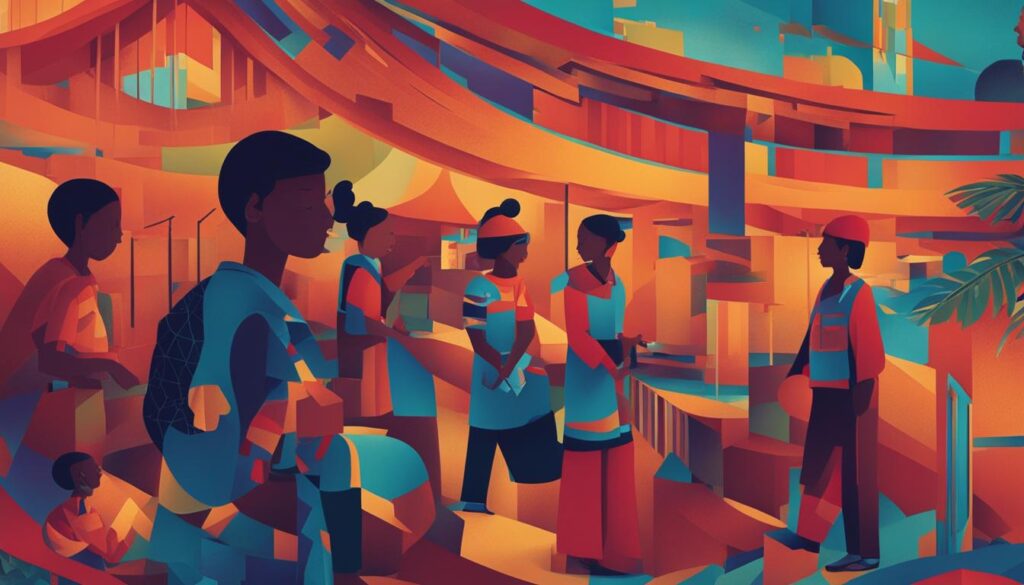
In today’s interconnected world, it is crucial for students to develop not only their cognitive skills but also their social-emotional skills. Social-emotional learning (SEL) plays a vital role in shaping well-rounded global citizens who can navigate diverse environments and contribute positively to society. By prioritizing the development of emotional intelligence, empathy, self-awareness, resilience, teamwork, and interpersonal skills, schools can empower students to thrive in an increasingly complex and interconnected world.
SEL equips students with the essential skills and competencies necessary to build and maintain healthy relationships, make responsible decisions, and effectively manage their emotions. It lays the foundation for students to understand themselves and others, fostering a sense of empathy and compassion. Through SEL, students gain valuable life skills that go beyond academic achievement, enabling them to navigate challenges, resolve conflicts, and adapt to change.
Integrating SEL into the curriculum involves creating a supportive and inclusive learning environment where students feel safe to express themselves authentically. It encompasses activities, discussions, and reflection exercises that promote self-awareness and emotional well-being. SEL can be infused into various subjects, including language arts, social studies, and even STEM, enabling students to develop a holistic understanding of themselves and the world around them.
One effective strategy for incorporating SEL is through project-based learning, where students collaborate on real-world projects that require teamwork, communication, and problem-solving. This approach allows students to practice their interpersonal skills while engaging in meaningful and relevant learning experiences. Additionally, SEL can be integrated into school-wide initiatives, such as peer mentoring programs and community service projects, which foster empathy, social responsibility, and a sense of global citizenship.
By prioritizing social-emotional learning, schools can nurture well-rounded global citizens who possess the skills and attitudes necessary to succeed in an interconnected world. Through SEL, students develop the emotional intelligence, empathy, self-awareness, resilience, teamwork, and interpersonal skills needed to navigate diverse cultural contexts, build meaningful relationships, and contribute positively to their communities.
Embracing Multilingualism: How Can International Schools Foster Language Fluency?
Language Fluency Programs in International Schools
Language fluency is a vital skill in today’s globalized world. International schools play a crucial role in fostering language fluency and supporting multilingualism among their students. By implementing language fluency programs, language immersion approaches, and bilingual education models, these schools provide students with opportunities to develop strong language skills and cultural competency.
Language fluency programs in international schools are designed to immerse students in the target language through intensive language instruction and meaningful language practice. These programs focus on developing listening, speaking, reading, and writing skills, enabling students to communicate fluently and confidently in multiple languages.
Language immersion approaches, on the other hand, create an immersive learning environment where students are surrounded by the target language. Through daily interactions and classroom activities conducted entirely in the target language, students develop language proficiency naturally and acquire a deep understanding of the language and culture.
Bilingual education models in international schools promote language proficiency by integrating language learning into the core curriculum. Students receive instruction in both their native language and the target language, allowing for a seamless transition between languages and a deeper understanding of subject matter across various disciplines.
By embracing multilingualism and implementing these language fluency programs, international schools equip students with essential skills for success in our increasingly interconnected world. Language fluency not only facilitates effective communication but also promotes cultural understanding, empathy, and appreciation for diverse perspectives. Visit Canada Global Academy’s School Partnership Program to learn more about how they are revolutionizing schools and empowering students through their innovative language programs.
FAQ
What is the Ed Tech revolution?
The Ed Tech revolution refers to the use of technology to enhance teaching and learning experiences in education.
How has Ed Tech transformed education?
Advancements in Ed Tech have made education more accessible, flexible, and convenient, revolutionizing the way students learn and teachers teach.
What role do start-ups play in the Ed Tech revolution?
Start-ups are significant contributors to the Ed Tech revolution, as they create innovative products and services to address the challenges faced by educational institutions.
What are the goals of the creative projects promoting intercultural understanding?
The creative projects aim to provide students with opportunities to learn about different cultures, develop empathy and understanding, and become active global citizens.
How can EdTech tools revolutionize international education?
EdTech tools have the potential to provide access to education across borders, foster global learning communities, and facilitate virtual classrooms in international education.
What are the benefits of innovative assessment methods?
Innovative assessment methods, such as performance-based assessments, authentic assessments, and formative assessments, cater to diverse learners and provide a more comprehensive understanding of their abilities.
How can curriculum development balance standards with individual needs?
Curriculum development can incorporate personalized learning strategies to create a customized curriculum that meets the unique needs of each learner.
How can schools promote global citizenship?
Schools can promote global citizenship by implementing strategies and initiatives that encourage cultural exchange, develop a sense of social responsibility, and address global issues.
What essential skills do graduates need in a globalized world?
Graduates need skills such as critical thinking, communication, collaboration, adaptability, and digital literacy to thrive in a globalized workforce.
How can arts and language integration enhance global communication?
Arts education and language learning can enhance cultural expression and creative communication, fostering global understanding and communication.
What is personalized learning and how can it revolutionize education?
Personalized learning tailors education to every student’s potential, promoting student agency and a student-centered approach to learning.
Why is social-emotional learning important in education?
Social-emotional learning develops important skills such as empathy, self-awareness, resilience, teamwork, and interpersonal skills, building well-rounded global citizens.
How can international schools foster language fluency?
International schools can provide language fluency programs, language immersion approaches, and bilingual education models to support multilingualism and promote language acquisition.
Source Links
- https://www.splashlearn.com/blog/future-of-technology-in-education/
- https://www.classter.com/blog/edtech/student-information-systems/the-ed-tech-revolution-the-future-of-education/
- https://otakoyi.software/blog/how-edtech-is-shaping-the-education-system-and-the-future-of-learning
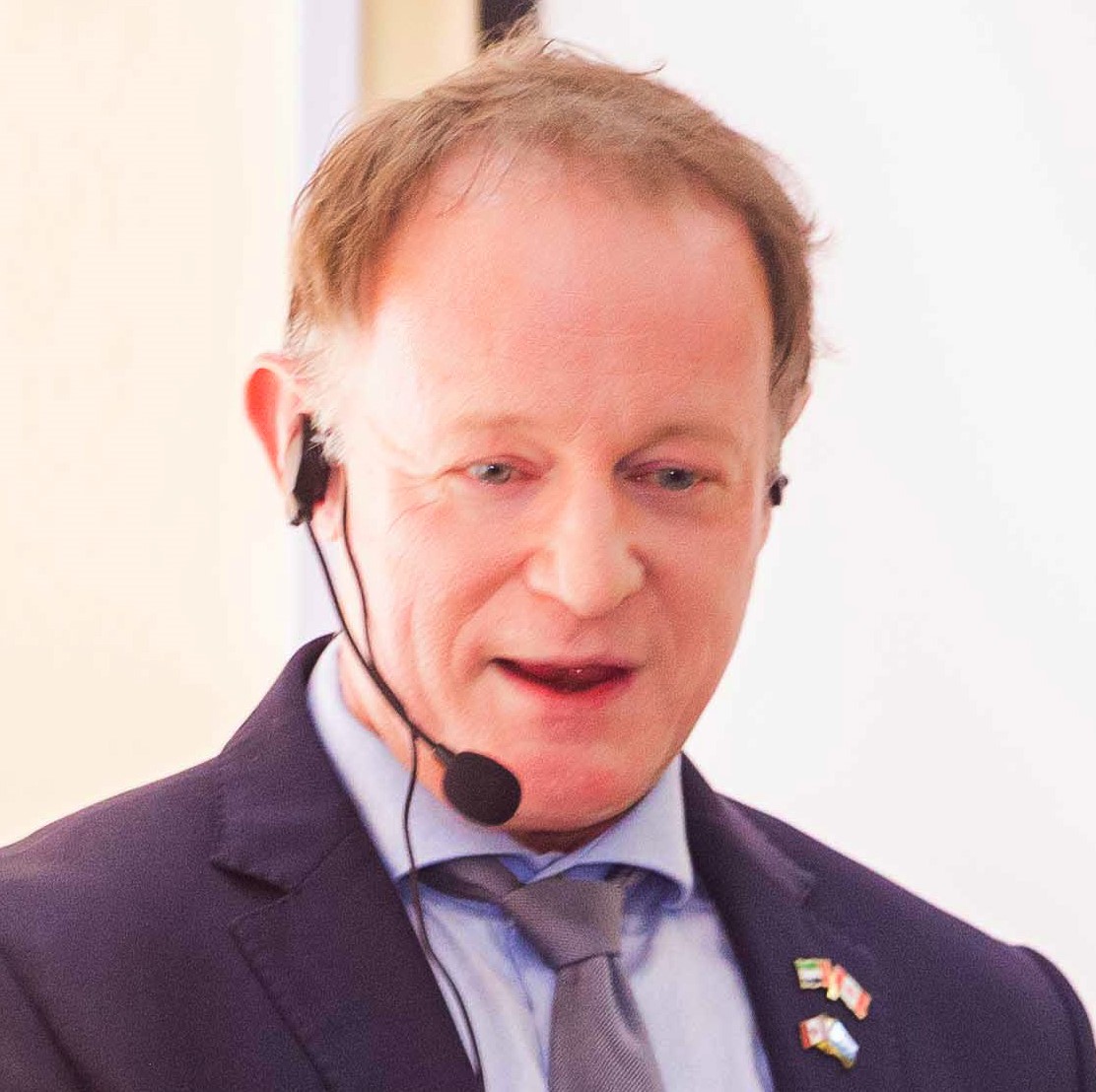
Martin Doherty is the CEO of Ethos Education & Canadian Global Academy : the exclusive authorized provider of the renowned 3rd globally ranked Ontario Ministry of Education‘s curriculum and Digital Learning Platform outside of Canada. He is also the founder the cutting edge magazine, Education Distruptor.
Through our School Partnership Program, we empower schools worldwide to attain Canadian Accreditation, providing the opportunity to establish themselves as Canadian Accredited schools. Additionally, home-based businesses can run their own Canadian Accredited Micro-School. Contact us today to learn more!
Related Posts
- Tech Savvy Students: Will EdTech Tools Revolutionize International Education?
Unlock global academia's future with educational expertise - witness a paradigm shift as EdTech tools…
- The Future is Now: 3 Emerging EdTech Trends Transforming International Education
Explore the future of education with emerging EdTech trends revolutionizing school technology & innovation worldwide.…
